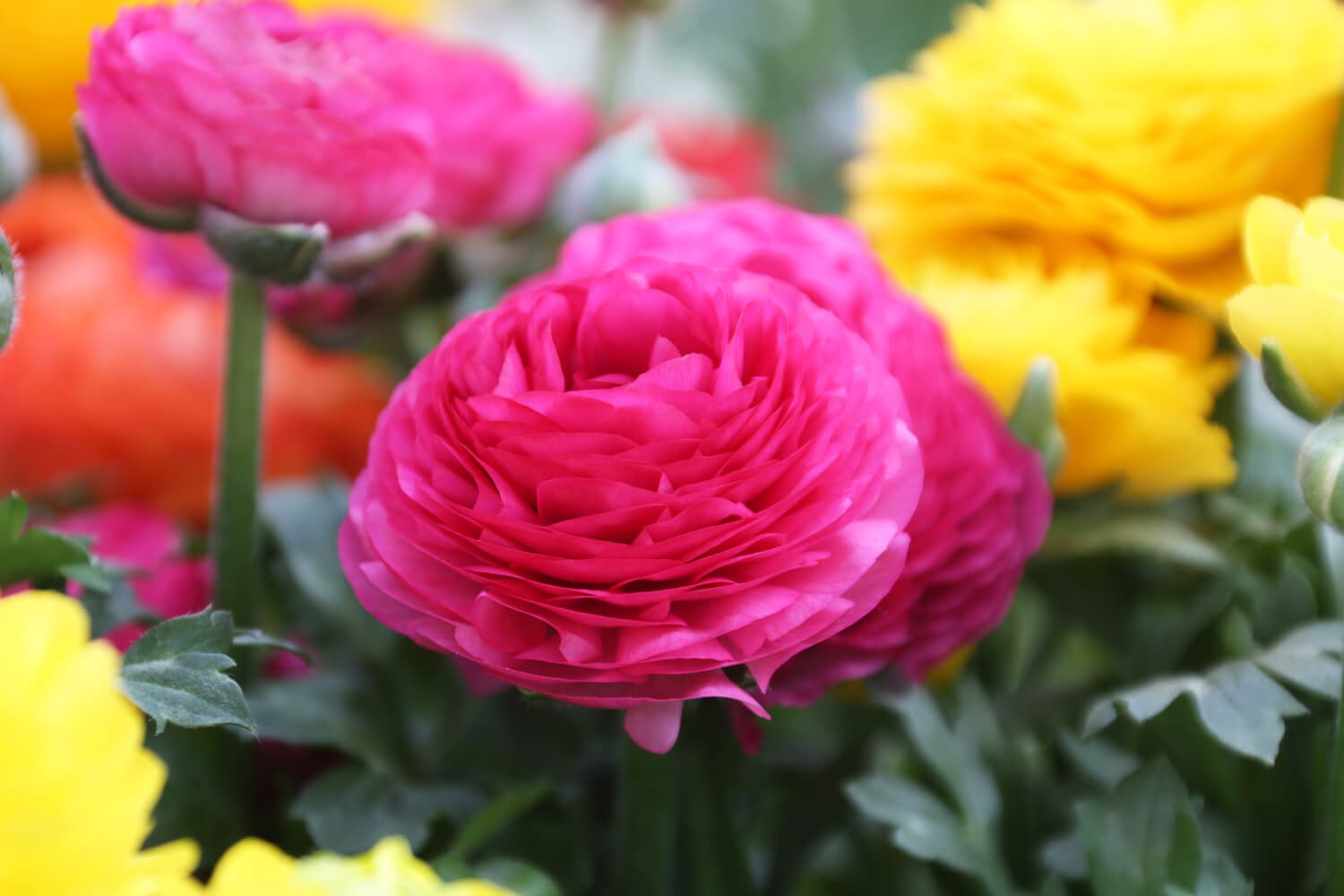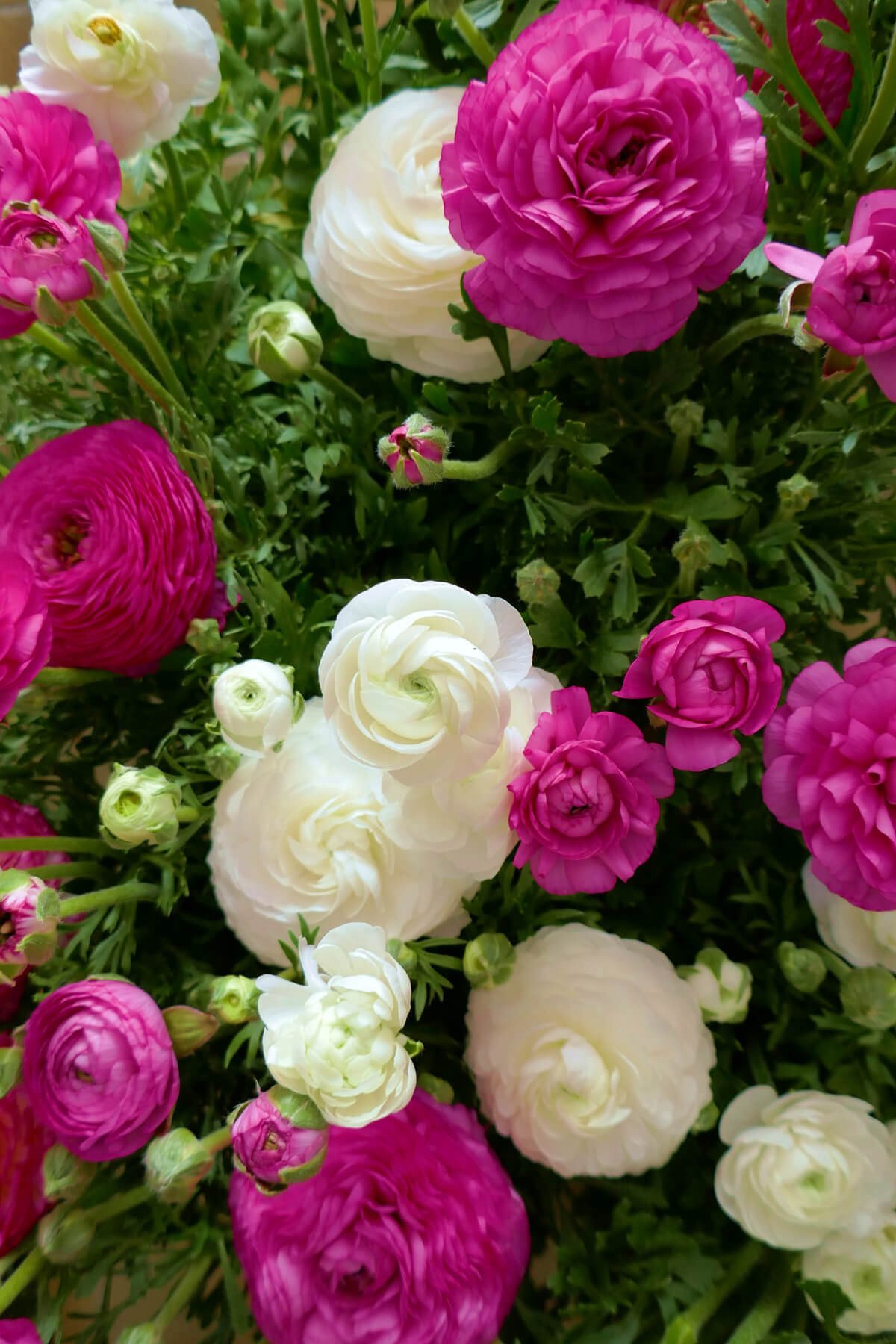
How to Grow Ranunculus in Zones 4-6
 Ranunculus are elegant spring flowers with rose-like blossoms that are packed with paper-thin petals. They are popular -- and pricy -- cut flowers with a very long vase life. Growing ranunculus at home isn't difficult, but these cool climate plants do have some special requirements.
Ranunculus are elegant spring flowers with rose-like blossoms that are packed with paper-thin petals. They are popular -- and pricy -- cut flowers with a very long vase life. Growing ranunculus at home isn't difficult, but these cool climate plants do have some special requirements.
Ranunculus corms are only winter hardy in growing zones 7-11. In these areas, the corms are planted in fall for flowers in late winter or early spring. In colder climates, the corms are planted in late winter for blooms in late spring and early summer. This post will cover the step-by-step process for how to grow ranunculus in zones 4-6, including how and when to soak the corms, pre-sprouting, bed preparation and planting. 
Where and When to Plant Ranunculus in Growing Zones 4-6
Ranunculus are cool-weather plants that grow and flower best when temperatures are between 50 and 75°F. Once summer arrives and temperatures rise, the plants stop flowering and begin to die back. Cold climate gardeners need to squeeze the whole ranunculus growing cycle into 3-4 months, so it's very important to get the timing right.
Gardeners in zones 4-6 should start their ranunculus in March for flowers in May and June. To calculate the best start date for your area, you first need determine when it will be safe to plant your ranunculus outdoors. The plants do not tolerate freezing temperatures, but you want to get them growing as early as possible so they flower before the weather gets hot.
Most cold climate gardeners grow their ranunculus under a caterpillar tunnel made of wire hoops and covered with frost cloth or poly. This protects the plants from frost and freezing temperatures, and lets you get them into the ground 2-4 weeks before the last frost date for your area. Once you decide on the date you'll be putting the plants in your garden, count back 2-3 weeks. This is the date to start soaking and pre-sprouting.
If you are just starting out with ranunculus and are planting less than 50 corms, consider growing them in containers. This way, when the weather is cold, you can easily cover the containers or even move them indoors. It's important for ranunculus to get as much sun and fresh air as possible. If you are starting them under cover, pull it back whenever the weather is warm, and remove it entirely once all danger of frost has passed.  Corms on the left before soaking. The ones on the right were soaked for 4 hours.
Corms on the left before soaking. The ones on the right were soaked for 4 hours.
How to Soak Ranunculus Corms
Dormant ranunculus corms are hard and dry, and they can be stored this way for many months. The best way to wake them up is to soak and pre-sprout the corms indoors. Pre-sprouting will give you flowers up to 3 weeks earlier.
Begin by soaking the corms in cool water (no more than 55°F) for four hours. It's important to keep the soaking water fresh by changing it at least once every hour. Dump out the old water and refill the container with fresh water. Putting the corms in a mesh bag makes it easy to lift them in and out of the bucket during the soaking process.
Another option is to aerate the water with a fish pump. You can also leave a gentle stream of water running in the bucket during the entire soaking period. After four hours (no more!), the corms will be plump and ready for pre-sprouting. 
How to Pre-Sprout Ranunculus Corms
For best results, use a flat bottom plastic seedling tray that has no drainage holes. Fill it with 1-2" of lightly moistened, high quality growing mix. Lightly moist is key, because if the planting medium is too wet, the corms will get moldy and rot.
Place the soaked corms with their "fingers" pointing down into the medium. You can place them very closely together as they will only be in the tray for about two weeks. Cover the corms with less than an inch of lightly moistened growing mix.  Now place the tray in an area that's cool, dry, and dark. An unheated basement or a spare room where the heat is turned off and the curtains remain closed is generally a good place to pre-spout ranunculus corms. Avoid areas that have high humidity as this can cause the corms to rot.
Now place the tray in an area that's cool, dry, and dark. An unheated basement or a spare room where the heat is turned off and the curtains remain closed is generally a good place to pre-spout ranunculus corms. Avoid areas that have high humidity as this can cause the corms to rot.
The ideal temperature for pre-sprouting is 50°F. While the corms are sprouting, the soil should stay slightly moist -- never wet, and not completely dry. Check the corms daily for signs of rot, and immediately discard any corms that are soft or moldy.
It is normal to lose some corms, so don't get discouraged. Instead, learn from what you see and adapt your techniques. Once you come up with the ideal location for pre-sprouting, with the right temperature and moisture level, you will lose very few corms.  After about two weeks, the corms will have developed roots and begun to sprout. This is the ideal time to plant them outdoors. Do your best to match pre-sprouting time with transplanting time so you are not trying to hold back the corms.
After about two weeks, the corms will have developed roots and begun to sprout. This is the ideal time to plant them outdoors. Do your best to match pre-sprouting time with transplanting time so you are not trying to hold back the corms. 
Transplanting Pre-Sprouted Ranunculus Corms
Plant ranunculus in full sun and rich, well-drained soil. Prepare the planting area ahead of time by incorporating several inches of compost into the soil. Plant the pre-sprouted corms 2” deep and about 9” apart on center. If there’s a chance you could still get some freezing temperatures, cover the planting area with hoops and frost cloth. When temperatures are above freezing, the planting area should be open to sun and wind. If there’s a possibility that temperatures could dip below freezing, make sure to re-cover the plants. 
What to Expect from Your Ranunculus
Ranunculus usually begin flowering about three months after planting. You can expect to pick flowers for 4-7 weeks, depending on the weather. Shade cloth can be used to help shield the plants from too much sun and heat. You may want to experiment with this to try stretching the flowering season.
Most gardeners and flower farmers treat ranunculus as an annual, even in areas where the corms are winter hardy. Planting fresh corms each year is the best way to ensure you'll get a great crop of flowers. Learn more here: All About Ranunculus To watch a how-to video by Danielle Keeton of Northlawn Flower Farm, click HERE.




